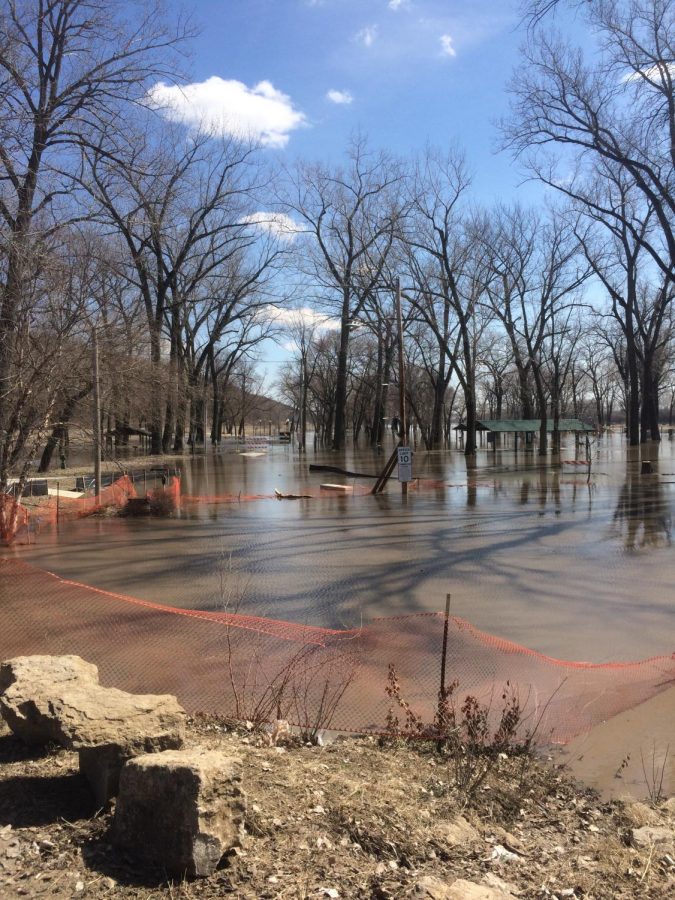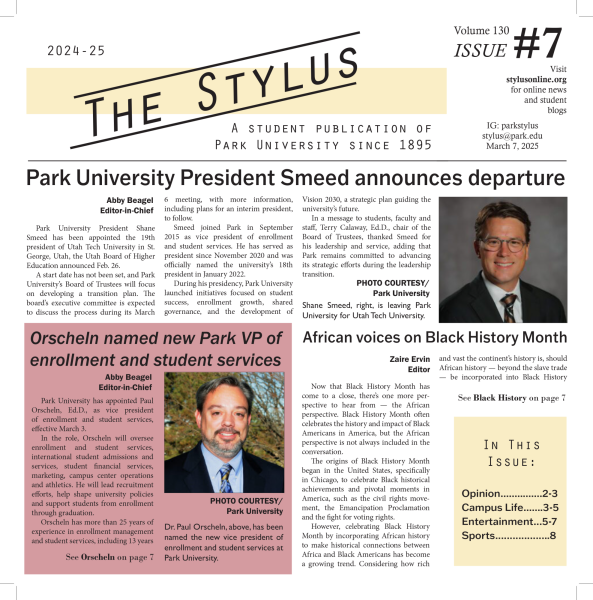Flooding causes havoc across the Midwest
English Landing Park completely underwater as a result of the harsh weather conditions this winter
The Missouri River breached its boundaries on March 16, flooding large areas of English Landing Park.
Local authorities have closed the park and surrounding areas, including McAfee Street as well as south Main Street, until the water lowers to safer levels.
Elsewhere in the area, like in Atchison, Kan., people have been evacuated due to the concern of further flooding upstream.
The Salvation Army has asked people in the Kansas City area to donate bottled water to help those who have been evacuated, with resources running low.
According to ready.gov, which echoes figures provided by the National Weather Service, the water levels have reached nearly 30 feet in Parkville. They predict further moderate floods until March 25. They are predicting the water could get as high as 33.4 feet.
Parkville has a history of flooding in the area, with the great flood of 1993 being described as “the worst natural disaster in U.S. history.” Damages to small business exceeded $8 million dollars.
This year’s flooding comes after a series of extreme weather and rainfall, known as a bomb cyclone, in other parts of the Midwest.
Nebraska has felt the brunt of the weather conditions with more than 74 cities underwater. Nebraska counties have declared a state of emergency as 17 locations have had record levels of flooding. Two people have been confirmed dead with others reported missing.
On March 16, the U.S. Coast Guard closed almost all water traffic from St. Joseph Mo., to Omaha, Neb., in a bid to minimize damage and casualties.
Iowa’s agricultural industries have also taken a huge blow, facing billions of dollars in damages to livestock production andhalting distribution of crops across the country.
On March 21, the Midwest is bracing itself for more rain and further flood warnings.
Your donation will support the student journalists of Park University. Your contribution will allow us to cover our annual website hosting costs, freeing up other funds for equipment, printing and training.







